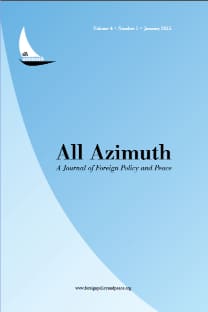Data Quality for Measuring Political Protest and Government Change
Data Quality for Measuring Political Protest and Government Change
Reliability, validity, event indicators, political protest government change,
___
- Almeida, Paul D. and Mark Irving Lichbach. “To the Internet, From the Internet: Sources of Data About Antiglobalization Protest.” Mobilization 8 (2003): 249-272.
- Althaus, Scott L., Jilly A. Edy, and Patricia F. Phalen. “Using Substitutes for Full-Text News Stories in Content Analysis: Which Text is Best?” American Journal of Political Science 43 (2001): 707-724.
- Brockett, Charles D. “Measuring Political Violence and Land Inequality in Central America.” American Political Science Review 86 (1992): 169-176.
- Davenport, Christian, and Patrick Ball. “Views to a Kill: Exploring the Implications of Source Selection in the Case of Guatemalan State Terror, 1977-1995.” The Journal of Conflict Resolution 46 (2002): 427-450.
- Dixon, William J., Edward N. Muller, and Mitchell A. Seligson. “Inequality and Political Violence Revisited: Response.” American Political Science Review 87 (1993): 983-993.
- Huxtable, Phillip A., and Jon C. Pevehouse. “Potential Validity Problems in Event Data Collection.” International Studies Notes 21 (1996): 8-19.
- Jenkins, J. Craig, Charles Lewis Taylor, Marianne Abbott, Thomas V. Maher, and Lindsey Peterson. “Global Conflict Data: The World Handbook of Political and Social Indicators IV.” Mershon Center for International Security Studies. www.sociology.osu.edu/worldhandbook
- Lichbach, Mark Irving. “The International News About Governability: A Comparison of the New York Times and Six News Wires.” International Interactions 10 (1984): 311-340.
- Rucht, Dieter, and Thomas Ohlemacher. “Protest Event Data: Collection Uses and Perspectives.” In Issues in Contemporary Social Movement Research, edited by Ron Eyerman and Dario Diani, 76-106. Beverly Hills: Sage, 1992.
- Schrodt, Philip A. “CAMEO: Conflict and Mediation Event Observations: Event and Actor Codebook.” http:// eventdata.psu.edu/data.dir/cameo.html
- Sommer, Henrik, and James R. Scarritt. “The Utility of Reuters for Events Analysis in Area Studies: The Case of Zambia-Zimbabwe Interactions, 1982-1993.” International Interactions 25 (1999): 1-31.
- Taylor, Charles Lewis, and David A. Jodice. World Handbook of Political and Social Indicators: Third Edition. New Haven: Yale University Press, 1983.
- Virtual Research Associates. Integrated Data Events Analysis (IDEA), http://vranet.com/data.aspx.
- Wooley, John T. “Using Media-Based Data in Studies of Politics.” American Journal of Political Science 44 (2000): 156-173.
- ISSN: 2146-7757
- Yayın Aralığı: 2
- Başlangıç: 2012
- Yayıncı: Dış Politika ve Barış Araştırmaları Merkezi, İhsan Doğramacı Barış Vakfı
Roundtable Discussion on Event Data
Ersel Aydınlı, Özgür Özdamar, Pınar İpek, Balkan Devlen, Belgin Şan Akça, Haluk Özdemir, Saize Arsavun, Joseph Bond, Reşat Bayer, William Lowe, Curtis Signorino, Sean O'Brien, James Yonamine, Cihangir Baycan, Ertan Efegil, Musa Tüzüner
Data Quality for Measuring Political Protest and Government Change
A Guide to Event Data: Past, Present, and Future*
Philip A. SCHRODT, James E. YONAMİNE
